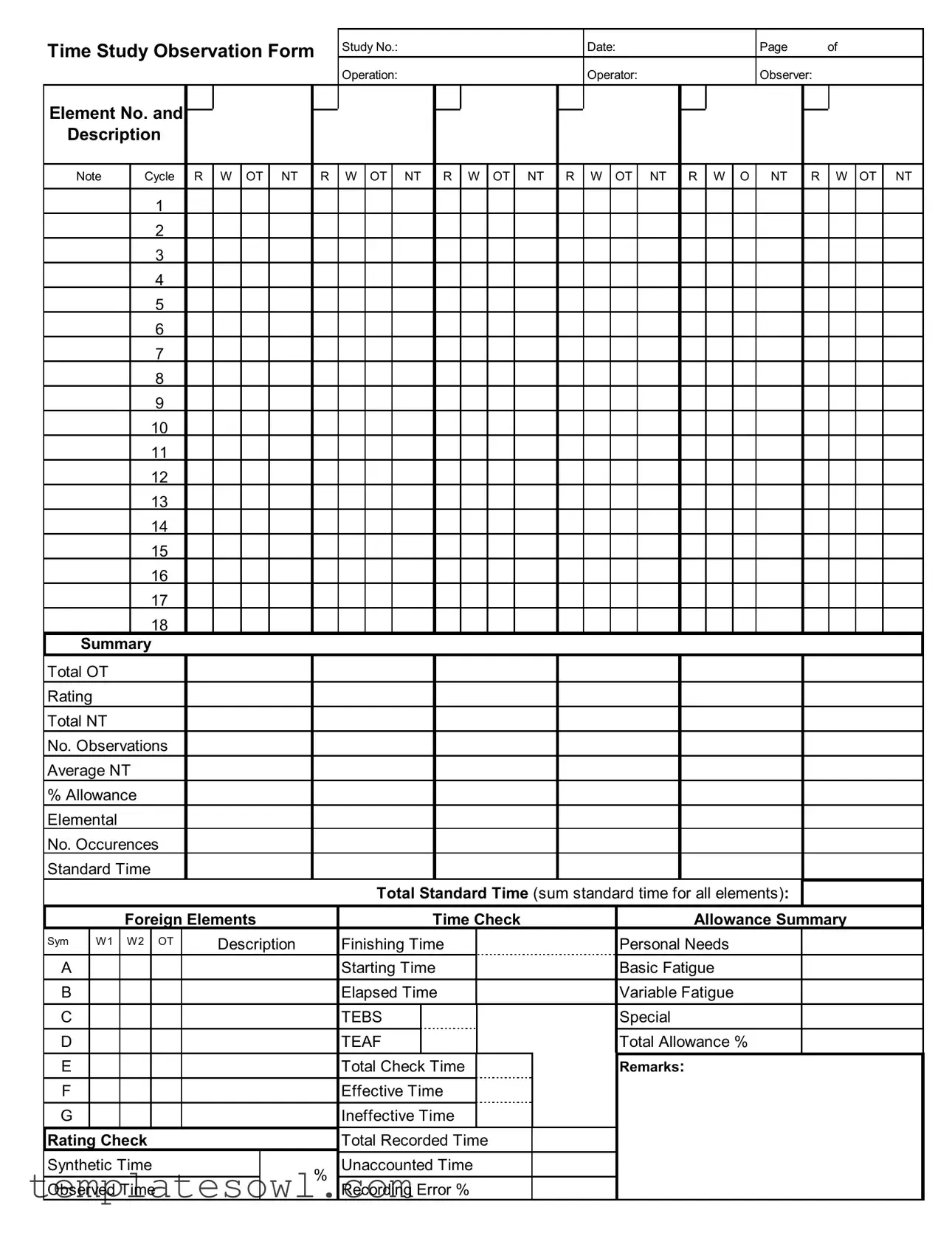What is the purpose of the Study Observation form?
The Study Observation form is designed to collect and analyze data related to specific operations within a study. It helps observers record details such as cycle times, operator activities, and the various elements involved in the operation. By summarizing observations, it aids in evaluating efficiency, identifying areas for improvement, and ensuring that operations are performed within specified time frames.
How should I complete the Time Study Observation Form?
To complete the form accurately, start by filling in basic information at the top, such as the study number, date, and operator name. As you observe the operation, use the form to note each element’s occurrence and record the corresponding times. Be diligent in tracking the cycle times for both normal and overtime aspects. Lastly, ensure that you summarize the total times and allowance percentages, providing a comprehensive overview of the observed operation.
What do the terms R, W, OT, NT mean on the form?
On the Study Observation form, R means Recorded Time, W stands for Worked Time, OT represents Overtime, and NT signifies Normal Time. Each of these categories is critical for understanding the different aspects of how time is utilized within the observed operation, which ultimately assists in productivity analysis.
Why is it important to track allowances?
Tracking allowances is essential because it accounts for time not directly tied to the actual work process, such as breaks or inefficiencies. By including allowances in your observations, you gain a more accurate representation of the total time needed to complete a task. This understanding helps refine production processes and enhances overall operational efficiency.
What should I do if I notice an error while recording times?
If you notice an error while recording times, it’s vital to correct it immediately if possible. Make a note in the Remarks section, indicating what was incorrect and how you modified it. Keeping a record of any discrepancies ensures clarity and accuracy in the data collected, which is crucial for later analysis.
How do I calculate the average Normal Time percentage?
To calculate the average Normal Time percentage, you'll need to sum all the Normal Times observed, then divide that number by the total observations made. Multiply this result by 100 to convert it into a percentage. This value helps identify the overall efficiency of the operator's performance during the study.
What are the benefits of using the Study Observation form?
Using the Study Observation form offers multiple benefits. It provides a structured way to collect data, allows for comprehensive analysis of time management, and supports the identification of areas needing improvement. By systematically reviewing operations, organizations can enhance productivity, reduce waste, and promote informed decision-making in process management.

